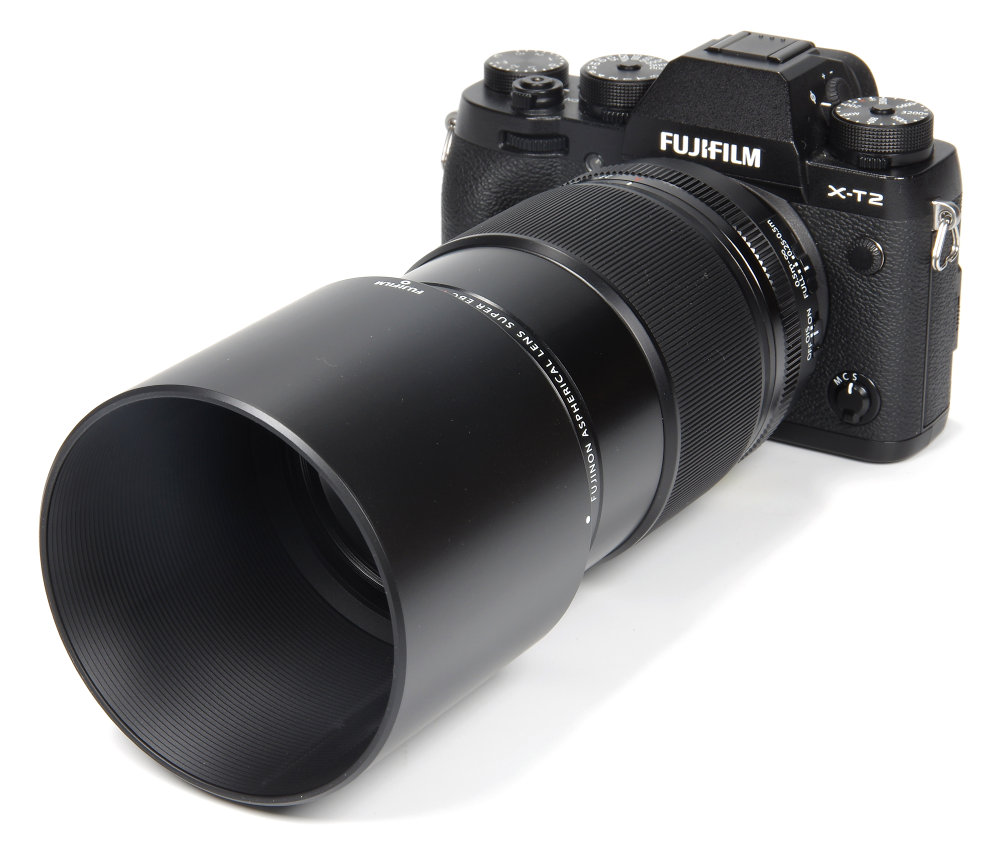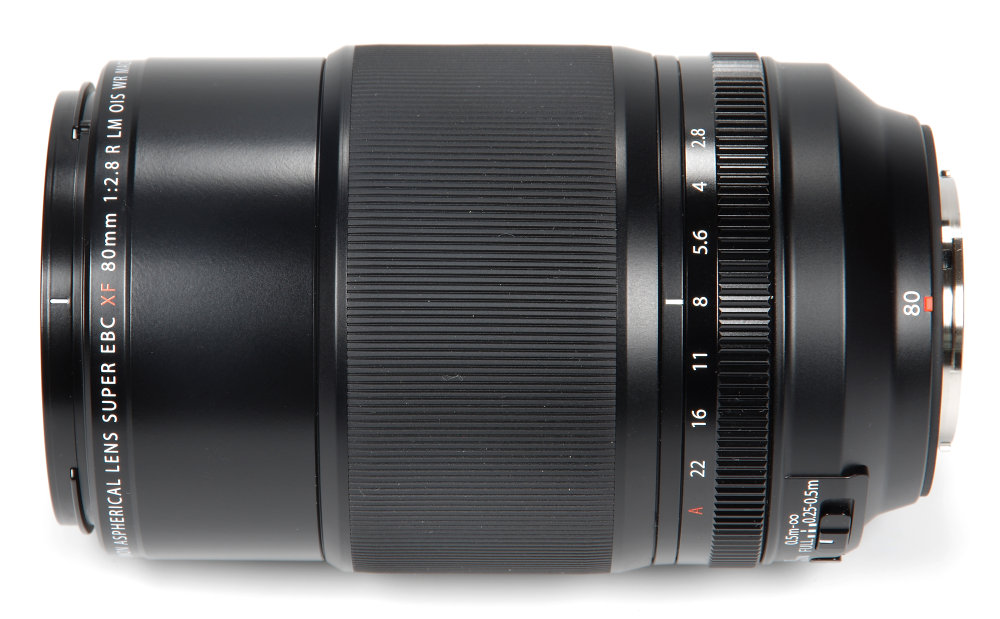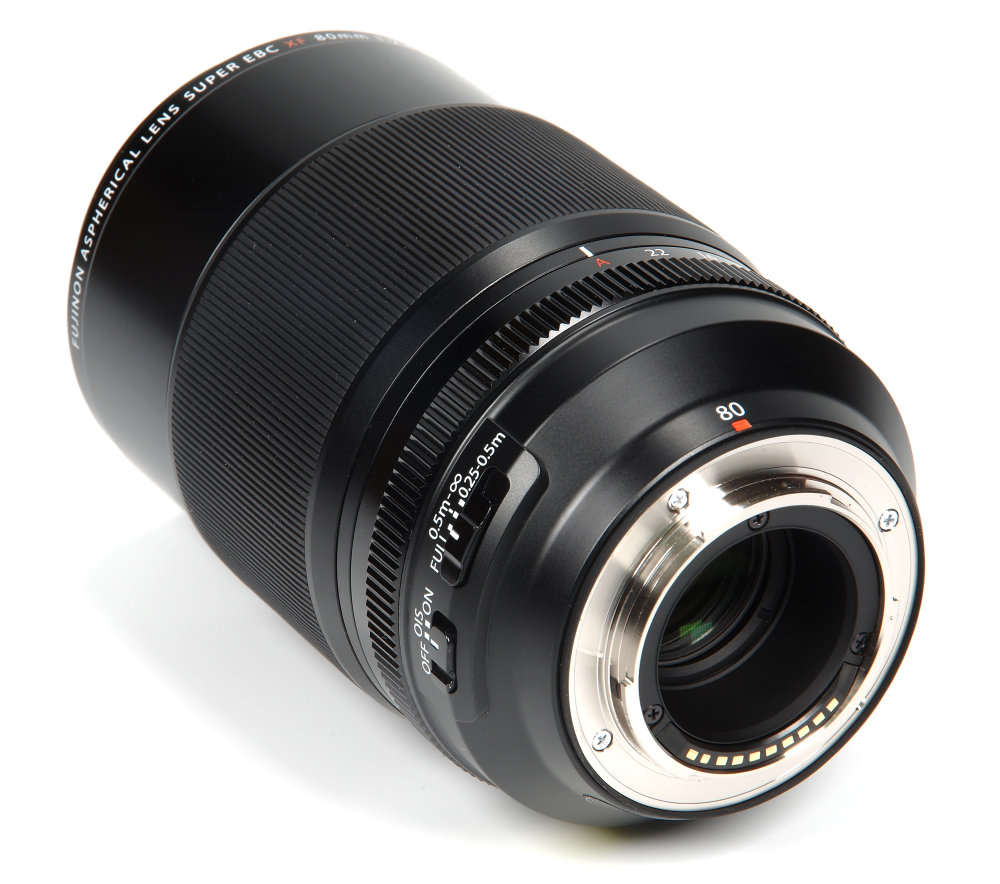Fujifilm Fujinon XF 80mm f/2.8 R LM OIS WR Macro Review
Fujifilm Fujinon XF 80mm f/2.8 R LM OIS WR Macro Handling and Features
First impression is of a chunky, well-made lens that weighs in at a fairly hefty 750g. Lifting and examining the optic we are treated to a quite dramatic clunking sound from within, clearly something connected to the OIS system. If we place the lens down again close to any ferrous metal objects, provided they are quite small they will promptly attach themselves to the lens barrel. Hair grips do this quite effectively, indicating that the lens has quite a strong magnetic field. This was confirmed using a compass, which reacts to the lens from a few centimetres away. The expectation is that such strong magnets could lead to an impressive OIS performance.
Our tour of the lens starts at the generously sized round lens hood. It bayonets cleanly and precisely into place and is very unlikely to come adrift accidentally. Within the bayonet fitting for the lenshood is a 62mm filter thread. The front element has been given a fluorine coating to repel dust, dirt and moisture. The rest of the lens elements are coated with Fuji's EBC (Electron Beam Coating) to suppress flare and improve contrast.
Moving towards the camera body we find the wide electronic focusing ring. This remains active during AF, enabling fine tweaks to be made, especially useful for macro photography. Focusing is down to 0.25m, a maximum magnification of 1.0x, 1:1 or life-size.
Next up is the generously sized aperture control ring. There is an A setting that enables apertures to be set by the camera body, or the ring can be used to set values with one-third of a stop detents. The ring is quite firm in operation but very smooth and the click stops are definite but verging on being slightly too indistinct. In practice, the aperture ring was used rather than the camera and this seemed to work well with the rest of the camera/lens ergonomics. Unfortunately, there is no distance scale, and therefore no depth of field scale either. This is particularly a pity with a macro lens.
Closest to the camera body are two switches. The first is the OIS (Optical Image Stabilisation) on/off. The second is the focus limiter, which gives three options, full, 0.5m – infinity and 0.25m to 0.5m.

Optical construction is 16 elements in 12 groups. There are 1 Aspherical, 3 ED (Extra Low Dispersion) and 1 Super ED elements. The diaphragm has 9 blades to improve the bokeh of the lens. The whole lens is weather and dust resistant.
As mentioned, longer macro lenses are very useful. We don't have to approach sensitive subjects such as insects quite so closely and room is left for lighting. If this 80mm is not long enough, the lens is compatible with Fuji's range of teleconverters. XF 1.4XTC WR gives us 112mm f/4 (35mm format equivalent 171mm f/4). XF 2XTC WR gives us 160mm f/5.6 (35mm format equivalent 244mm f/5.6).
The lens is fantastic to use, having fast, responsive AF and a great feel to the controls. The layout balances perfectly with the camera body.
Add your message
Please login here or if you've not registered, you can register here. Registering is safe, quick and free.
photodo Stats
428 MTF tests
74 in-depth photodo reviews
100+ users join each day
Help the lens community by reviewing or rating a lens today via our lens search
Latest Lens Reviews
- Chinon 28mm f/2.8 Vintage Lens Review
- Canon EF 70-200mm f/4L IS II USM Lens Review
- Samyang AF 85mm f/1.4 EF Review
- Sigma 70mm f/2.8 DG Macro Art Review
- Samyang AF 24mm f/2.8 FE Review
- Meike 50mm f/1.7 Review
- Tamron 70-210mm f/4 Di VC USD Review
- Lensbaby Burnside 35mm f/2.8 Review
- Asahi Super Takumar 50mm f/1.4 Review
- Asahi Super-Multi-Coated Takumar 135mm f/3.5 Review


